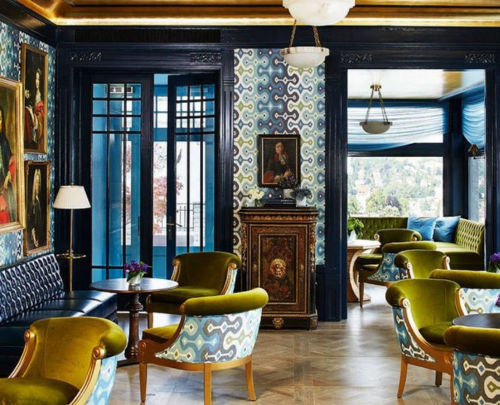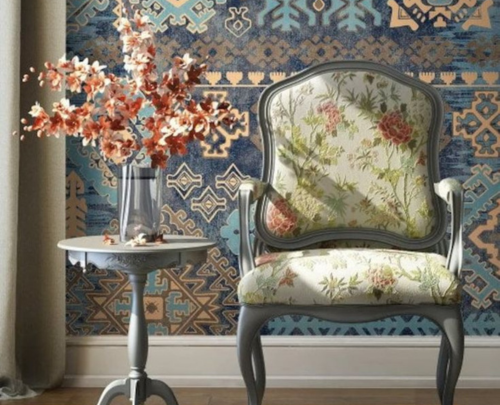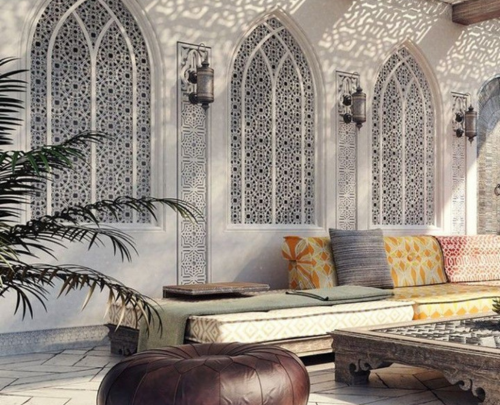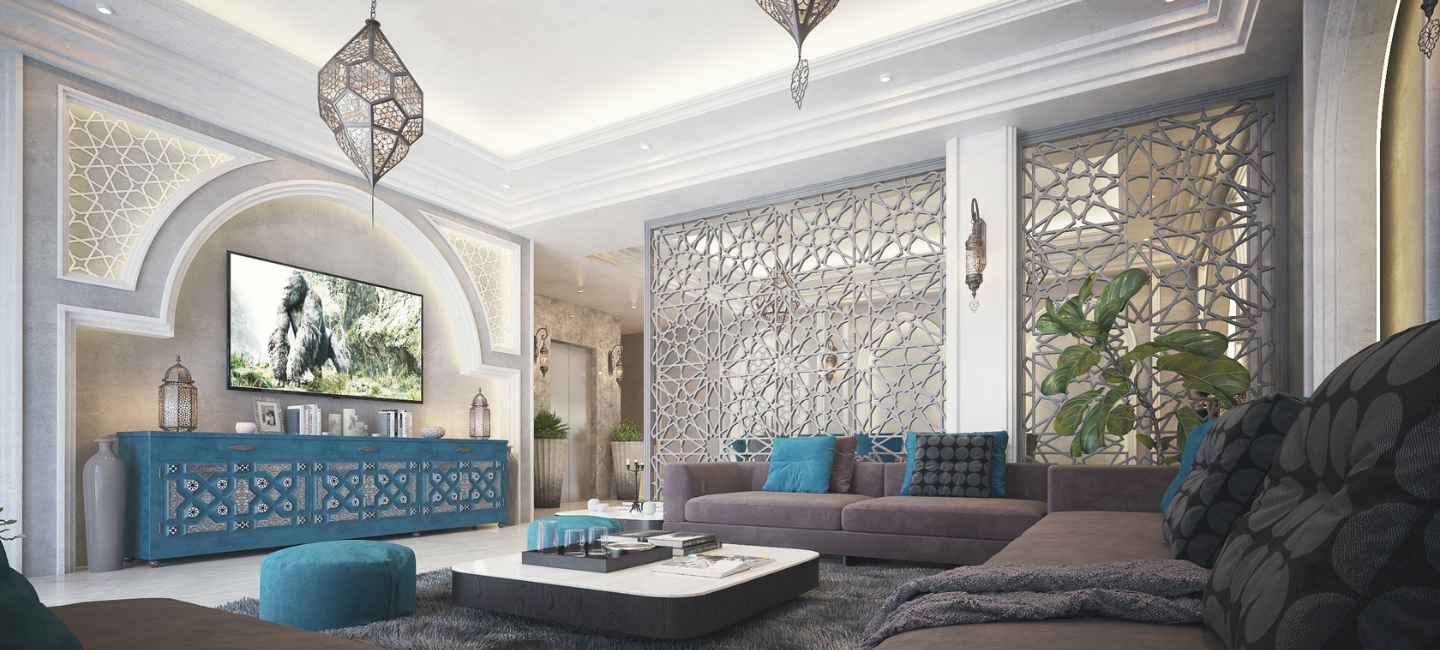Moroccan interior design has mesmerized the world with its captivating blend of cultural diversity, intricate craftsmanship, and vibrant aesthetics. Rooted in a history shaped by myriad civilizations and influences, Moroccan design stands as a testament to the enduring allure of exotic elegance and timeless beauty. Foyer embarks on a journey to explore the profound and lasting influences of Moroccan designs on the world of interior design, revealing how they have redefined living spaces, transcended geographical boundaries, and etched their place in the annals of design history.
Morocco’s architectural and design traditions have always been deeply intertwined with its rich tapestry of cultural influences. From the Berber tribes of the Atlas Mountains to the Arab conquerors, from the Andalusian scholars to the French colonial era, Morocco’s history is a mosaic of diverse cultural interactions. This fusion of influences has given rise to a unique design language that is as diverse and enchanting as the nation itself. Moroccan design is not merely an aesthetic choice but a cultural journey that spans centuries. The intricate patterns, vibrant colour palettes, and ornate details found in Moroccan interiors tell the story of a nation that has embraced its past while looking towards the future. It is a design language that pays homage to its roots while inviting the world to revel in its splendour.

From the artistry of geometric patterns to the allure of exquisite tilework, from the opulence of Moroccan textiles to the cultural symbolism embedded in every detail, we will uncover the magic that Moroccan design brings to homes across the globe. As we journey through the influences of Moroccan design, it becomes evident that its impact extends beyond aesthetics. It serves as a bridge connecting different cultures and eras, fostering an appreciation for the craftsmanship of Moroccan artisans and the cultural richness of the region. Through Moroccan design, homes become not just spaces of beauty but also vessels of cultural significance and timeless elegance.
A Melting Pot of Cultures

Moroccan design stands as a testament to the nation’s unique historical journey, reflecting a captivating amalgamation of cultural influences. Arab, Berber, Andalusian, and French elements intertwine seamlessly, creating a distinctive design language characterized by ornate details, intricate patterns, and a sense of timelessness. This harmonious blending of cultures has given rise to a design style that resonates with individuals worldwide.
The Artistry of Geometric Patterns

One of the most striking features of Moroccan design is its extensive use of intricate geometric patterns. These patterns, often found in mosaic tiles, textiles, and woodwork, are emblematic of Moroccan interiors. Geometric designs, including the iconic Moroccan star, serve a dual purpose by adding depth and visual interest to spaces while conveying deeper symbolic meanings of harmony, unity, and infinity. This harmony resonates within the interiors, creating a tranquil and balanced atmosphere.
Vibrant and Enchanting Color Palettes

Moroccan design is renowned for its fearless embrace of bold and vibrant colour palettes. Deep blues, fiery oranges, earthy browns, and rich reds are commonly used to infuse energy and warmth into interiors. These colours are drawn from Morocco’s natural surroundings, such as the blue of the Mediterranean Sea and sky, the red of the desert sands, and the green of lush oases. The use of such vibrant colours evokes a sense of vitality and passion, transforming homes into inviting and lively spaces.
The Allure of Exquisite Tilework and Zellige

Moroccan design is synonymous with the artistry of tilework, particularly the renowned Zellige tiles. These handcrafted tiles are meticulously arranged to create breathtaking mosaic patterns that adorn walls, floors, and fountains. Zellige tiles not only serve as visual feasts but also represent the Islamic tradition of art and geometry. They are a testament to the skill and craftsmanship of Moroccan artisans, elevating every space into a living masterpiece.
Luxurious Textiles and Fabrics

Moroccan textiles play a pivotal role in interior design, adding a layer of opulence and comfort to living spaces. Traditional fabrics like silk, satin, and brocade find their way into upholstery, drapery, and decorative pillows. Elaborate embroidery featuring geometric motifs and metallic threads brings a sense of grandeur and authenticity to interiors. Moroccan rugs, particularly the famed Berber rugs, prized for their artisanship, add a cosy and genuine touch to homes around the world.
Unique Furniture and Decor Elements

Moroccan furniture and decor items have earned recognition for their exotic charm and handcrafted quality. Pieces like intricate brass lanterns carved wooden screens, and low-slung seating arrangements such as pouffes and divans have become iconic staples of Moroccan design. These elements not only serve functional purposes but also serve as focal points, transporting residents and guests to an enchanting world reminiscent of Arabian nights.
Courtyards and the Essence of Riads

Moroccan design extends its influence beyond interior spaces, seamlessly blending the indoors with the outdoors. The concept of riads, traditional Moroccan houses built around central courtyards, has garnered global acclaim for their architectural beauty. These lush courtyards, featuring bubbling fountains, intricate tilework, and verdant gardens, create a serene and rejuvenating atmosphere. Many homes across the globe incorporate Moroccan-inspired courtyards or gardens, bringing a slice of Moroccan oasis into their living environments.
Cultural Significance and Symbolism

Moroccan design often carries profound cultural significance and symbolism. For instance, the horseshoe arch, a prevalent architectural feature, symbolizes protection and good luck. Calligraphy, showcasing verses from the Quran, is commonly integrated into Moroccan design, reflecting the importance of spirituality and culture in daily life. These symbolic elements imbue homes with a sense of reverence and cultural connection, transcending mere aesthetics.
Moroccan design stands as a testament to the enduring allure of cultural diversity and the transcendent power of aesthetics. Its influences on interior design and homes have left an indelible mark, transforming living spaces into sanctuaries of beauty and cultural significance. The profound and lasting influences of Moroccan designs are a testament to the enduring appeal of exotic elegance and timeless beauty. As we have explored the intricate geometric patterns, vibrant colour palettes, exquisite tilework, luxurious textiles, and cultural symbolism embedded in every detail of Moroccan design, we find that its impact extends beyond aesthetics. It serves as a bridge connecting different cultures and eras, fostering an appreciation for the craftsmanship of Moroccan artisans and the cultural richness of the region.

Moroccan design is more than just a design style; it is a cultural journey that spans centuries and continents. Its legacy is one of beauty, harmony, and a deep connection to the past. It is a reminder that the world of interior design is not confined by geographical boundaries but is a global tapestry of influences and inspirations. As we continue to draw inspiration from Morocco and its rich design heritage, its influences on interior design and homes will endure for generations to come. Moroccan design has the power to transform houses into homes filled with warmth, beauty, and a touch of the mystical. It is a celebration of cultural diversity and a testament to the timeless allure of design that transcends time and place. In the world of interior design, Moroccan design will forever remain a source of fascination, inspiration, and enduring beauty.


